Notes
Spencer Platt: Journey Through Cholera
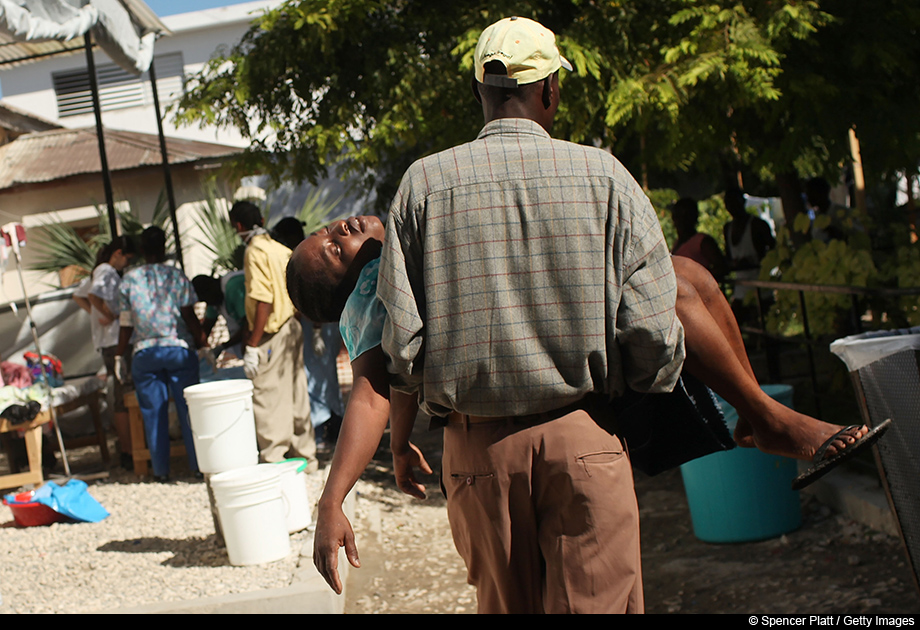 St. Marc, Haiti, October 30, 2010: A cholera patient is brought into a hospital run by the Haitian government.
St. Marc, Haiti, October 30, 2010: A cholera patient is brought into a hospital run by the Haitian government.
Photographer Spencer Platt describes the moral uneasiness of working in Haiti during a cholera outbreak in this personal essay:
The chimes of a shoe shiner’s bell echo down the dirt road leading to the Petite Riviere hospital. I can see him from the front seat of the truck we are travelling in while heading to the town’s hospital. Wearing a battered brown fedora, he sways right and left avoiding potholes and puddles. A dilapidated wooded child’s chair that is missing most of its wicker seating is hung haphazardly over his shoulder. I begin to wonder who his customers are. Here, in rural Haiti, in the middle of a cholera outbreak while still collecting ones balance from the January earthquake men are having their shoes shined. Are they headed for a job interview with an NGO? Or are they going to meet a lover for a meal? Maybe it’s the simple dignity that keeps the secluded woodsman trimming his beard and tucking in his shirt. I don’t know the answers and no customers emerge from the dark shadows along the road.
The town’s hospital sits behind an iron gate on the road parallel to the overly stately police station. Its disjointed and scattered buildings form a maze of doors and hallways that reek of loss and neglect. In French there is a polite notice that this was once a delivery ward. This room, which had been used to usher new lives into the world; whose walls witnessed the screams, fears and sobs of the joy of birth, is now home to an ominous sight. Men and women, young and old lay prostrate in the late afternoon light with rehydration drips tethered to their thin arms. They are the fortunate ones, the ones who made it to the hospital and didn’t die in a fetid shed where shafts of light filter through wood slats to reveal worlds of dust and rot.
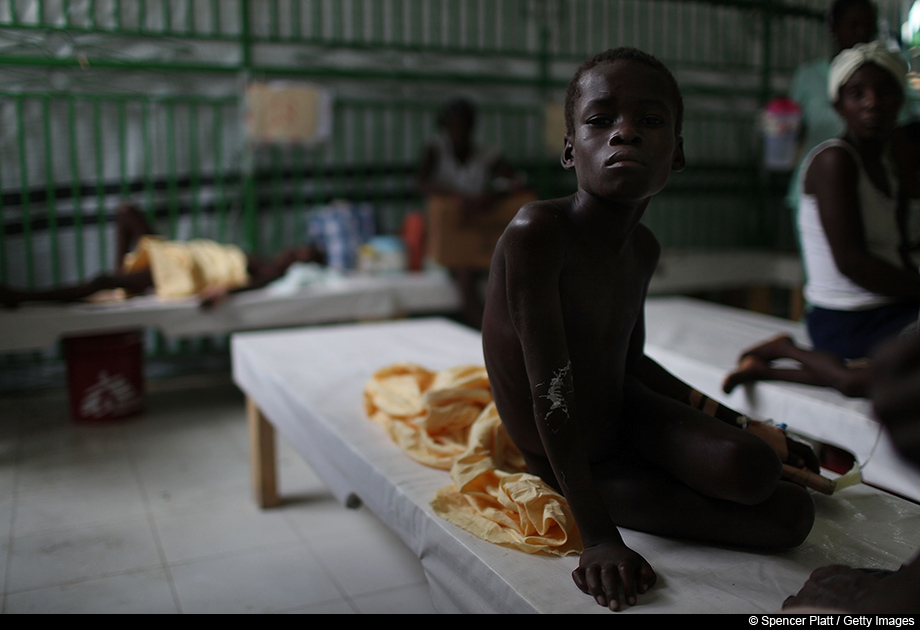 Petite Riviere, November 6: Evilort Carlos, ten years old, suffering from cholera.
Petite Riviere, November 6: Evilort Carlos, ten years old, suffering from cholera.
I have come here to take pictures for the news agency I work for. I am on a deadline and must not linger in the hospital. A French nurse and a Canadian press officer lead me on a tour of the premises. I stop to look at a young boy whose head is silhouetted in front of a small window. At these moments it is easy to forget where one is. Like lying in a bed at a strange hotel after a frantic evening arrival; how did I get here and what am I supposed to do now? This boy, who is suffering from a Victorian disease, sits silently next to a woman who I assume is his mother. Suffering is horrible and ugly, but the wordless tenderness between this boy and woman has a beauty that is difficult to describe. I take some pictures and gingerly make my way through the ward towards the exit. I have lost my companion somewhere in the recovery ward and it is only when I hear him call my name that I see him walking by a row of white tents which have been neatly folded and dismantled in preparation for an approaching hurricane.
The gold dust from the Haiti fundraisers, the glamorous film actors committed to little else, the cameras and editorials, the well meaning charities have become lost somewhere along this road to Petite Riviere. Maybe it was near where I dropped my phone in its brown leather case as I exited our truck to shoot images of flooded homes. Maybe this tangle of good intent never got past the legions of unemployed men loitering on the road through Cite Soleil. Their faces a sundry mix of confusion, fear and hate as they swagger past the women selling Chinese sandals and large green mangos across from the United Nations outpost. More likely it was the three hour flight from New York to Port au Prince, a flight that daily ushers one in comfort from the hissing of espresso machines to the din of children’s cries jostling to carry your bag for a bit of change.
At our hotel in the small city of St. Marc the genteel Belgian manager shuffles along the corridor near the large window overlooking the brackish blue swimming pool. Seeing me at my computer with the cords of a satellite phone snaking out the door he stops and asks how many people have died of cholera today. I tell him the latest number and he corrects me, it was a quiz of course as he knows better. He has lived in Haiti for over twenty years and has married a Haitian woman, their beautiful children run through the hotel day and night bouncing balls and leaping down stairwells. The large Haitian maids know to give them room when they hear their cries approaching. In the evenings you can sit beside the pool overlooking the ocean enjoying a cold Prestige while wondering how this side of Haiti, this unspoiled tranquility, has proved so clever at avoiding headlines. In the dawn I pull back a ragged tan curtain to glimpse a small fishing boat seemingly frozen in cobalt waters, its cream colored sail floating like a kite in an evening sky as a storm approaches.
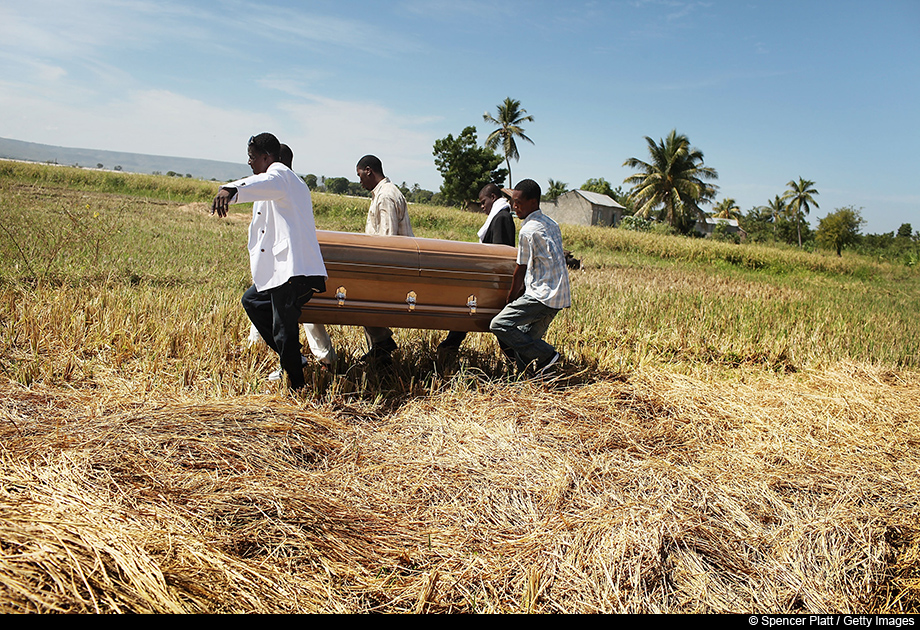 Dubuission, October 30: The casket of Jonathan Daniel, 34, who died suddenly of cholera, is brought to a rural grave.
Dubuission, October 30: The casket of Jonathan Daniel, 34, who died suddenly of cholera, is brought to a rural grave.
We are following the casket which sits haphazardly in the back of a dented blue pick-up truck. It was all the sisters Widlene Pierre and Adonia Bathelemyse could afford for the transport of the body of their mother to the cemetery. We watched in silence at the morgue as they counted a fistful of Haitian gourdes and made furtive phone calls to find a makeshift hearse. Between their lack of money and the Haitian suspicion over the contagiousness of cholera, transportation proves difficult. Finally the pick-up truck arrives outside of the hospital gates and the simple wooden casket is pushed into the back. One sister sits in the cab with the driver while the other hangs onto the casket for the hour long ride to their rural village. The casket is met with screams in the village, screams not of anguish but of fears that this body has returned to claim them with the deadly illness from the river.
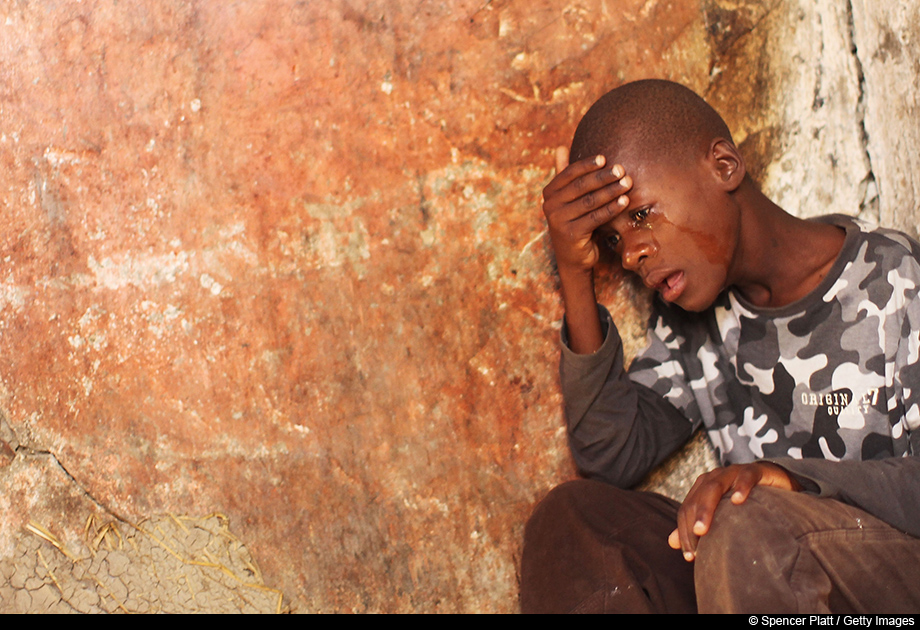 Back D’Aguin, October 29: Misthaki Pierre cries after the burial of his mother, Serette Pierre, who died the same day she contracted cholera, leaving Misthaki without a mother or father.
Back D’Aguin, October 29: Misthaki Pierre cries after the burial of his mother, Serette Pierre, who died the same day she contracted cholera, leaving Misthaki without a mother or father.
After burying the body we follow the sisters back to a small wooden home where they tell their younger brother Misthaki Pierre the news. The boy begins to wail uncontrollably alone in a small room. I watch him for a moment from the door. As the tears stream down his young cheek I notice that his shoes and pants are far too big. His sobs are drowned out by two teenagers indifferently playing dominoes on the porch. Their loud smacks, clicking and banter are evidence of a cold indifference that is pervasive in a land that has witnessed so much carnage. Nevertheless, for a moment I want to kill them.
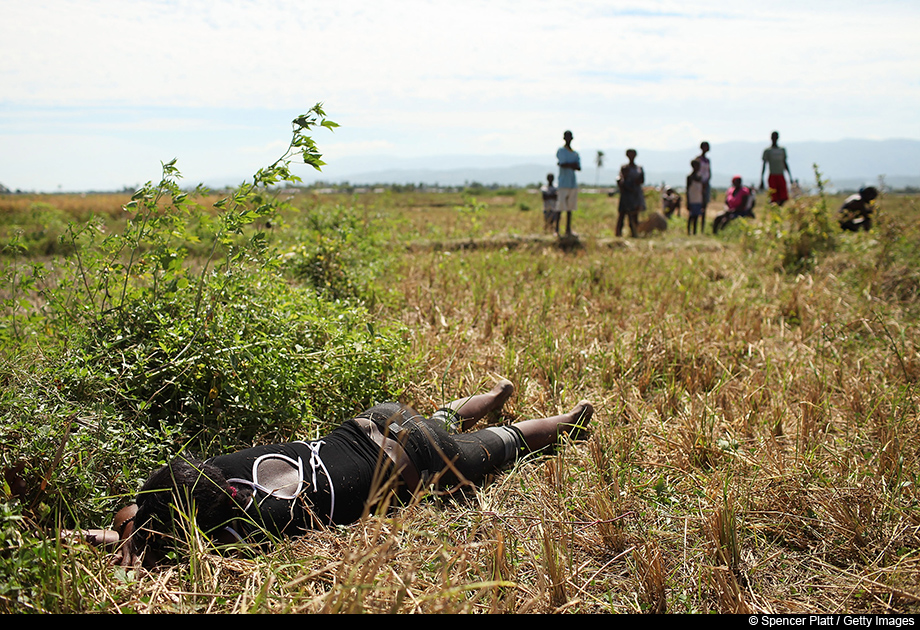 Dubuission, October 30: A woman is overcome with grief at the funeral for Jonathan Daniel.
Dubuission, October 30: A woman is overcome with grief at the funeral for Jonathan Daniel.
Could Haiti be a vision of our future? Could those Haitians who board rickety rafts in darkness and grope into the ocean like a drunken man into the night be bearers of news from a world to come? Those Haitians who dream of seeing that jagged eggshell on the horizon, the Florida shoreline in the distance, could they be the ones arriving from a modern dystopia with something to teach us? Journalists, doctors, missionaries and politicians have been the daily cargo for flights in and out of Haiti for decades. The country never fails to let one down; the images and stories serve as an apocalyptic narrative of despair in a distant land.
During our ascent, as the wheels on the American Airlines flight slowly revert inside, I can see the tents, smoke and rusting port below slowly fade from sight. Above us in the overhead compartments are safely stored dozens of boxes of Barbancourt Haitian rum, every passenger seemed to have one of the neat yellow boxes as if prohibition had just been declared . Three rows down from me sit a famous American chef and his documentary entourage having concluded a piece on exotic Haitian cuisine. He looks puffy and content as he scratches away on an iPad while the crew count their money as they feel the elderly baggage handler may have swindled them.
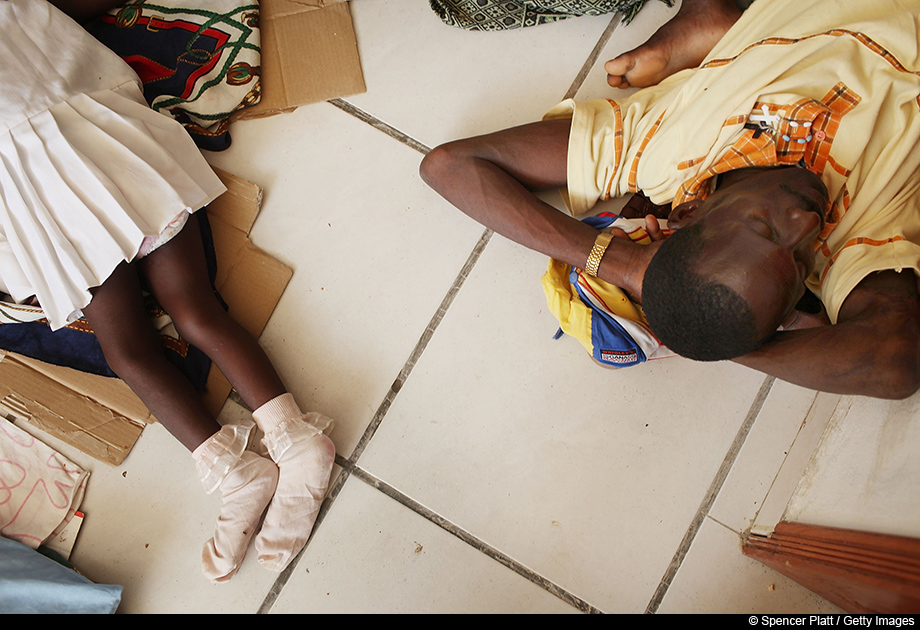 St. Marc, October 27: Cholera patients lay on the floor at a hospital.
St. Marc, October 27: Cholera patients lay on the floor at a hospital.
As I write there are well over one thousand confirmed dead from cholera in Haiti and riots are spreading throughout the country. In my cold Brooklyn apartment there is the face of a reporter on the new flat screen television. He is sweating and speaks with a nasal British accent. I can see a disorderly hospital ward behind him with dejected looking people. As the camera scans the faces it stops at the image of a screaming child being assisted by a frantic looking white nurse. Before going to a commercial break the reporter walks towards the camera as the hospital slowly disappears into the background; he says the illness may spread as far as America.
–Spencer Platt
PHOTOGRAPHS by SPENCER PLATT / GETTY IMAGES
Please also see the BagNewsOriginals series from photographer Brendan Hoffman, six months after the earthquake.

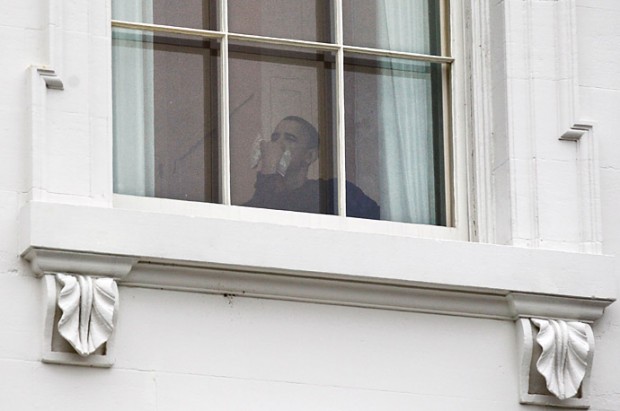
Reactions
Comments Powered by Disqus